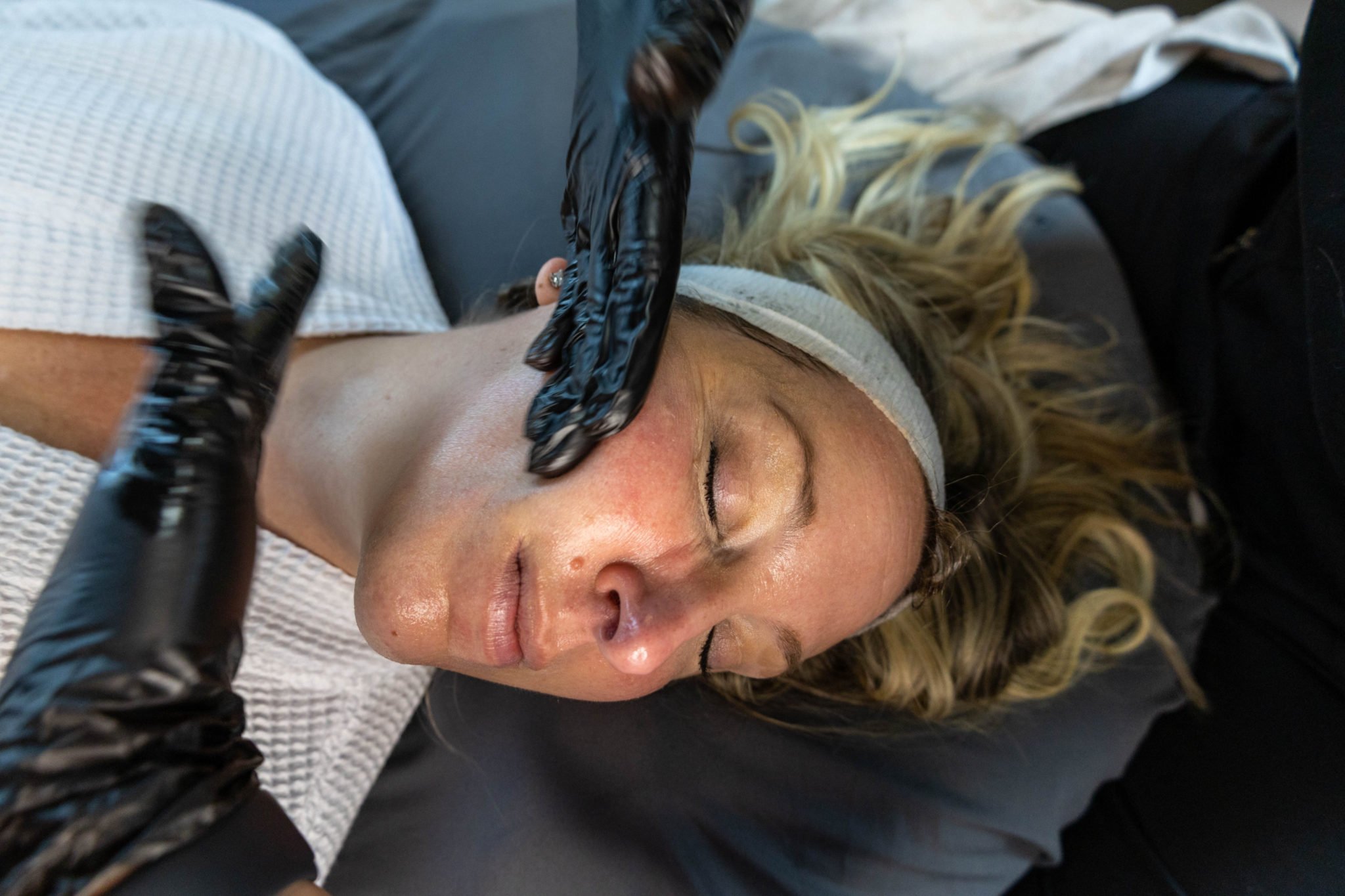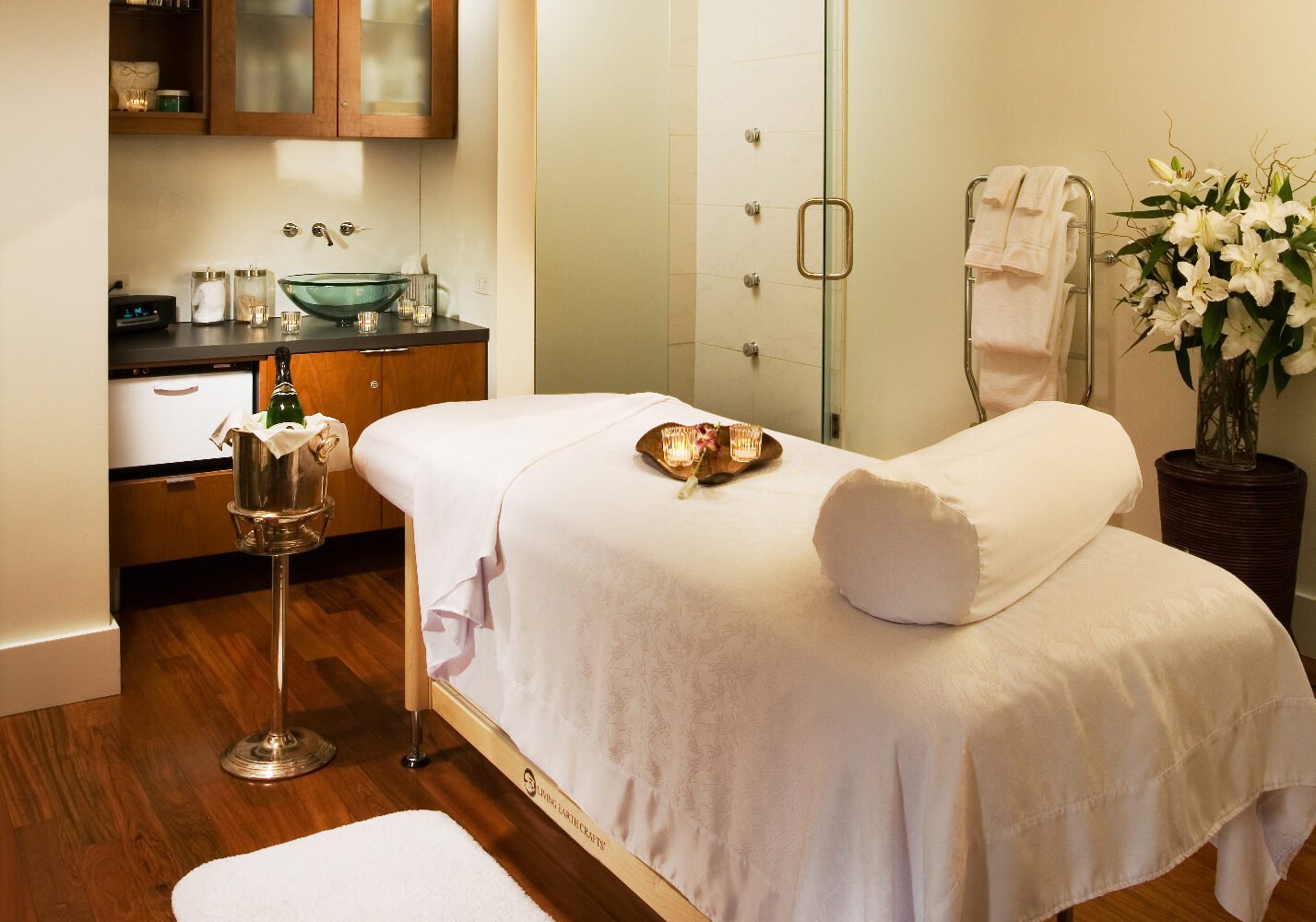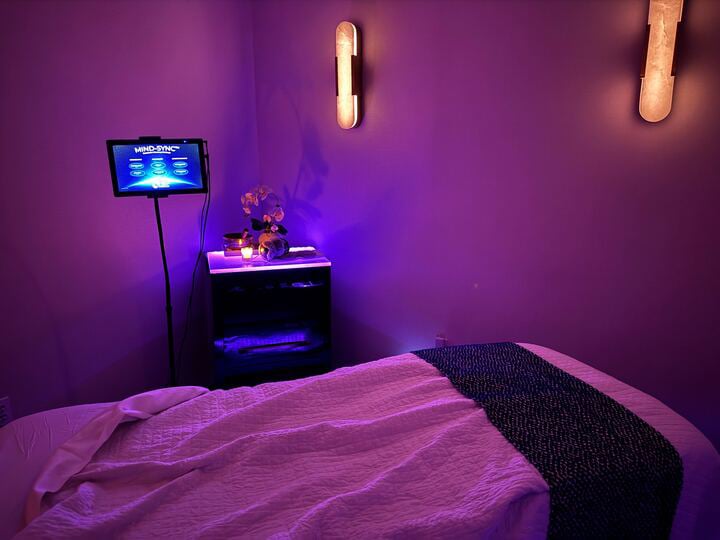As an aesthetician, Slone Mathieu has exfoliated me, steamed me, popped me, and peeled me, but never before has she slapped me. However, that’s exactly what she’s about to do. As part of a “Fit Facial,” I’m at Sculp’d in Old Town Alexandria, fully recumbent on an exam table, about to be smacked in my unfit face.
Only a few weeks before, when I asked Mathieu to demonstrate the velocity of her open palm, she struck my forearm and made my eyes tear. At 49, she looks 12, so, yes, I will have exactly what she’s having. It hurts to be beautiful, as my mother used to say.
“Are you ready for it?” Mathieu asks from somewhere above my head. I immediately brace myself as if I’m in the facialist’s version of Fight Club.
What comes next is not a “Snap out of it!” Cher wallop but more like a series of cartoonish thwacks, as if Mathieu is holding a parakeet to my face and letting its wings flap around.
Oh, the things we do in our quest for eternal youth.
According to the menu of services at Sculp’d, the Fit Facial is a “workout for your face!” Using a combination of rollers and manual stimulation—here’s where the slapping comes in—“this workout will lift, contour, and tighten your face,” or so Sculp’d claims.
But rather than giving the elevens between my brows a tiny set of barbells, Mathieu, who is the lead aesthetician at Sculp’d, spends 45 minutes applying various things to my face—fingers, serums, oxygen delivered through a gun—and, at one point, something that looks suspiciously like Goop’s top-of-the-line vibrator. There’s even a chemical and physical exfoliation made possible by a Zemits HydroVerstand device, which sounds like something from outer space and feels like getting a tongue bath from a cat.
So far, my face has been a passive participant. But all that changes when Mathieu starts the strength-training part of the treatment, using a microcurrent device that causes involuntary muscle contractions. She hands me a mirror and I watch, mesmerized, as my upper lip twitches into an Elvis snarl and my right eyebrow rises to my hairline. Remember when you dissected a frog in seventh grade and made the dead legs kick by using a pair of electrodes? That was my face.
As I look at my 58-year-old visage twitching away in the mirror, I begin to wonder if all this zapping and slapping is actually doing anything significant.
Places like the Face Gym–with 15 locations worldwide, including NYC and LA—offer workouts almost identical to the one I’m receiving. There are even online tutorials that claim to be able to change the shape of your nose into something worthy of a Kardashian through kneading and manipulation alone.
And while a gym for your face sounds like the newest way to market a facial (we’ll slap those jowls into shape!), the technique, known as Hadado or Kobido massage, has been around for centuries. Touted as a Japanese facelift, this 540-year-old practice involves fast and intense movements in which the skin is pinched, pulled up, and kneaded back into a more youthful state. (Like to experience Hadado for yourself? Skincare by Valentina, a salon in Georgetown, offers the service.)
The technique enjoyed a revival in 2012 on the West Coast when a salon in San Francisco began offering “the ancient Thai art of face slapping” as a way to reduce wrinkles and firm the face. Facials in K-Beauty land also include lightly slapping the skin to increase blood flow and product absorption. And for the Gen-Zers who dominate TikTok and Instagram, what’s old is new again: Y2K fashion, vinyl records, and a slew of videos that feature young beauty influencers manhandling their faces like Play-Doh.
“It’s just another technique to boost circulation and reduce puffiness,” explains Noëlle Sherber, a board-certified dermatologist in DC. I contacted Sherber a week after my Fit Facial to learn what, if anything, lay beneath the technique.
“The idea behind microcurrent treatment is to trigger muscle contractions, which is why this can be billed as a workout for your face,” Sherber says. “This can result in a more toned and defined facial appearance temporarily, as muscles can look more defined after a workout.”
However, she acknowledges that long-term studies are necessary to determine whether the use of microcurrent treatments results in a sustained improvement over time. For those kinds of results, Sherber says, “structural change is needed, and this is difficult to achieve noninvasively.”
I tell Sherber that my facial included something called positive pulse pressure (PPP), in which a sculpting wand applied gentle pressure on my skin while delivering pulses of pure oxygen. The technique, Mathieu told me, helps reduce edema and sculpt facial features through lymphatic drainage.
“Lymphatic-drainage techniques, in the hands of expert aestheticians or massage therapists, can absolutely help reduce swelling and puffiness,” says Sherber, adding that patients recovering from surgical facelifts can use these methods to speed recovery from swelling. I also read that lymphatic drainage gets blood flowing, giving you a more glowing complexion.
Valerie Monroe—former beauty director and “Ask Val” columnist at O, The Oprah Magazine, a frequent contributor to The Cut, and author of the weekly Substack newsletter How Not to F*ck Up Your Face—isn’t convinced. “I am appropriately dismayed by the lack of reasoning (or the preponderance of unreasoning) behind this new trend in facials,” she emails from Tokyo, where she’s visiting family. “Whatever results you saw were superficial—you know, the way when you fall on your face or a small animal attacks you, you might end up with superficial bruises.” Admitting she isn’t a fan of facials in general, Monroe tells me that if offered the opportunity of the Fit Facial, “I’d agree to it only if I were allowed to slap the facialist back.”
That isn’t exactly my impulse when I see the results of my time in the chair. My face—especially my upper cheeks—looks lifted and fuller. And the gauntness under my eyes is gone. But I’m also red and blotchy. The redness fades after an hour, and by the time I return home, so does any evidence of the facelift.
In fact, when I tell my husband about my facial and ask him if I’ve finally achieved eternal youth, he laughs his head off for a full minute. (The Fit Facial costs $130, with four to six treatments recommended.)
I suppose I deserve it. I think back to a conversation I once had with a friend. A self-proclaimed beauty addict, she told me she would put leeches under her eyes if she thought they’d make her look younger. Aging is tough. Even tougher for women. So what’s a little slapping between two consenting adults? At least we can all be thankful the era of the bird-poop facial is over.
This article appears in the June 2024 issue of Washingtonian.



















